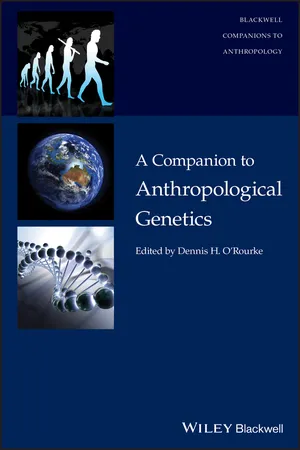Biological Sciences
Common Ancestry
Common ancestry refers to the concept that all living organisms share a common genetic heritage, tracing back to a single ancestral population. This idea is a fundamental principle in evolutionary biology and is supported by evidence from comparative anatomy, genetics, and the fossil record. Understanding common ancestry helps scientists to trace the evolutionary relationships between different species.
Written by Perlego with AI-assistance
Related key terms
2 Key excerpts on "Common Ancestry"
- eBook - ePub
Theistic Evolution
A Scientific, Philosophical, and Theological Critique
- J. P. Moreland, Stephen C. Meyer, Christopher Shaw, Ann K. Gauger, Wayne Grudem(Authors)
- 2017(Publication Date)
- Crossway(Publisher)
1For these reasons, it is appropriate to devote some space to scientifically examining Common Ancestry. Most of the other chapters in this section of the book (Section I, Part 2) will focus on specific claims of human/ape Common Ancestry. This chapter, however, will focus more broadly on universal Common Ancestry—the idea that all living organisms are related.I. Theistic Evolutionists Strongly Endorse Common Ancestry The importance of Common Ancestry to theistic evolution is witnessed in the extremely strong language that theistic evolutionists use when defending the concept.Francis Collins argues in The Language of God that “the conclusion of a common ancestor for humans and mice is virtually inescapable.”2 In Coming to Peace with Science , biologist and former BioLogos president Darrel Falk writes regarding mammals that “virtually all geneticists are convinced . . . they share common ancestors.”3 Another frequent BioLogos author, Dennis Venema, a biologist at Trinity Western University, argues that “[n]um erous independent lines of genomics evidence strongly support the hypothesis that our species shares a common ancestor with other primates.”4 - eBook - ePub
- Dennis H. O'Rourke(Author)
- 2019(Publication Date)
- Wiley-Blackwell(Publisher)
This point also holds true in research, where the tested samples and the inferences from them depend on the laboratory and public databases of information. Continental ancestry and race Ancestry tests use statistical estimates that infer the likelihood of a person having ancestors originating from a certain geographical region, based on the genetic profiles of people who live there today. Biogeographical ancestry combines estimates of genetic ancestry, based on AIMs, with continental ancestries that are tied to geographical locations around the world. Continental ancestry typically refers to geographic origins represented by five major parental populations, originating from Africa, Europe, Asia, the Americas, or Oceania. A geographic origin is then inferred starting from the recent common ancestor based on the genetic differentiation seen in present‐day populations that are considered Indigenous to these geographic areas (Nassir et al. 2009 ; Royal et al. 2010). Inferences are made about a person's presumed ancestral past based on certain DNA markers that are found at higher frequencies in one population compared to other populations. Researchers may use statistical estimates of data derived from multiple AIMs to infer deep ancestral relationships. Certain population groups who are relatively homogeneous might harbor DNA markers that are found at higher frequencies compared to other populations. Some of these populations are classified as reference populations and are then used as comparison groups to determine degrees of similarities and differences with other populations. Ancestry estimates for a person's genome may be presented as multiple proportions of ancestral contributions, adding up to 100%, a reflection of contributions of different ancestral pasts based on the reference populations
Learn about this page
Index pages curate the most relevant extracts from our library of academic textbooks. They’ve been created using an in-house natural language model (NLM), each adding context and meaning to key research topics.

